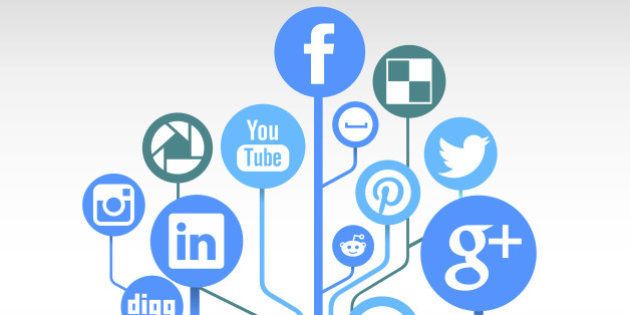
Unusual ways to leverage your social media to land your dream job!
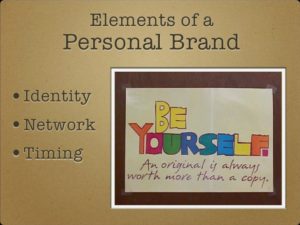
Leverage your social media for better Jobs. Social media plays a vital role in career growth. Leverage your social media for better opportunities in your career.
Most of the business in today’s era is no longer just rely on posting traditional job ads online or in newspapers. They prefer using social media to screen job applicants or contact professionals who aren’t actively seeking a job. So, everyone needs to be aware of your digital footprint and take steps to establish your professional identity online. It let the recruiters and potential employers connect with you and open the door of career opportunities. Here’s how social media help you.
Four Social media you must create a profile with to leverage your social media to land your dream job!!
Facebook is the largest global social network. Its main purpose is creating a space where you socialise with your peers, post photos of things you did on the weekend etc.
Jobseekers get a lot of advantages from Facebook. Following recruitment firms to hear of their latest roles on offer, be aware that opening up your profile page to employers to view can have its drawbacks too. So, keep tight control over how much details you allow the general public to see by getting well acquainted with your privacy settings.
If you are not on LinkedIn yet — you should be. LinkedIn is the professional equivalent of Facebook. Here, your ‘profile’ isn’t about posting personal photos. It acts as an online exhibition of your resume and employment background.
Upload your latest resume and fill in the gaps on your bio so that prospective recruiters who land on your LinkedIn profile can see what roles you want to hear about. It also allows you to follow companies you’d like to work for, network with like-minded individuals within your preferred industry via your connections and participate in relevant discussions on group forums.
Twitter is a ‘micro-blogging’ platform. Here users can update status regularly in the form of tiny 140 character info-bytes. It is not only a powerful tool in your career on several levels but also the most obvious way to discover your next job. Search for hashtags (#) of roles you are interested in applying for, tweet to businesses you would like to work for and follow the twitter handles of recruitment agencies that specialise in your industry.
Instagram can do more than just keeping you updated on your friends’ marriage, babies, and vacations. If you use it the right way, the app can also help you find the next job.
Instagram is an excellent way to establish your personal brand, demonstrates marketable skills and enhances your overall digital-savvy. It might even help you connect with your future employers and differentiate yourself from the competition during the job interview process.
Social media’s can blur the line between our personal and professional lives. But when it comes to searching jobs, you can leverage this tool to show the firms that you are so much more than what they see on your resume. Social media is an ideal tool that allows you to network, build your brand, and prove that you are the best candidate for the job position. No matter what network you decide to use to leverage your next career opportunity, there’s no denying the power of social networks.
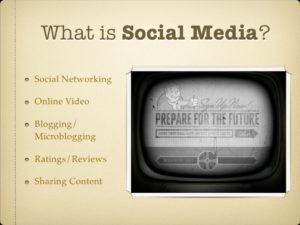
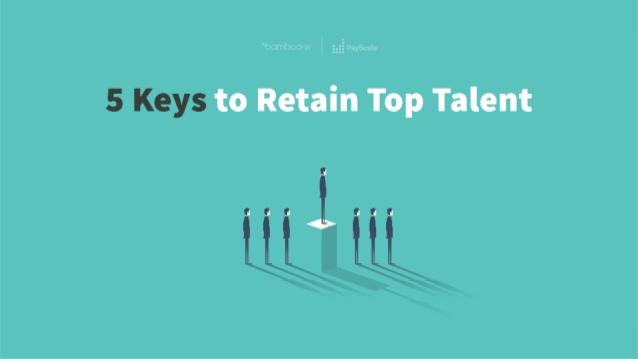
How learning programmes attract and retain top talents in your organisation?
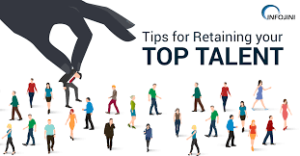
Retain top talents in your organisation for sustainability and longer vision towards the goal. Retain top talents to gain trust with the employees who are hired newly.
Recruiting and retaining talent is critical to the success of every organization. After all, a business firm is only as strong as the collective talent of the employees work there.
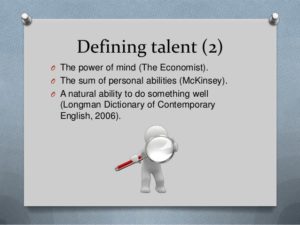
So how do you hire and retain great talent?
A crucial part of recruiting and retaining great people is providing real learning opportunities to them, which facilitates their career growth. Give your employees the opportunities they seek, accelerate their growth, and transform their careers.
Here are a few bold and innovative techniques. Using this you can remain vigilant in your search for the next perfect addition to your team.

Techniques to lure top talents
- Showcasing your competitive advantages
To attract top talent, your company need to become a place where people advance their career. It should be a place where people get opportunities to learn new skills and get new challenges. And every candidate needs to know about it.
- Lure qualified candidates with compelling job descriptions.
A good and attractive job description does more than just explain an open position at your firm. It highlights how a new employee will grow, learn, and make an impact. Get job applicant excited about how they can grow within your company.
- Share stories of career transformation on your company page.
Ask your current employees to describe how they have used learning to transform their careers at your company. Discuss how they have moved into leadership roles and developed new skills for success.
Employees are the most prominent stewards of your firm’s culture and your most valuable business resource. So, collect and share testimonials that highlight your fascinating company culture and outstanding leadership.
- Emphasize that your organisation has invested in learning and development.
Clearly declare the mission and goals of your learning program. You can use your careers webpage to celebrate the tools and technologies that help your employees grow.
- Empowering employees to transform themselves
People leave jobs for new opportunities if your workspace doesn’t provide a room for development. So career advancement is significant to detach your employees from fatigue and job stress.
What are the ways to empower employees to transform themselves professionally? It is one of the most asking questions. To transform your employees, you should develop a culture of transformation. A clear career path will compel them to stay with an organisation longer.
- Lunch and Learn sessions
Facilitate thirty to forty-five-minute sessions every day to dive deep into a range of subjects including
- How to embrace changes,
- How to work in teams,
- How to manage people, etc.
All these sessions can bring a social element to learning.
- Internal marketing
Place printed materials on every desk, demonstrating how employees can engage with your learning program. It will develop excitement and enhance engagement.
- Office hours
Set aside a few minutes to allow employees to stop by your office for a quick overview of how to set and manage learning goals and get the most from a learning program. Ask your employees to bring their own devices for hands-on experience.
- Reminders
Keep learning by displaying posters around the office, sharing content on your intranet or internal groups, and providing with monthly reports on learning impacts across your company.
- Executive sponsors
Have an executive sponsor to send an email that tells employees how your learning program benefits your organisation.
3.Conduct training programmes
Training is transactional, and learning is transformational. So use your learning program as a competitive advantage when attracting, engaging, and retaining talent. Inspire employees to achieve their career dreams. Promote lifelong learning.
- Delivering happiness through learning and development
To have an engaged working team, you should build a strong company culture, invest in career transformation, and provide employees with various learning opportunities to be successful.
How to make the most of learning programs
- Onboarding
Employees should align with the culture and values of the company and start following an individualised new hire roadmap.
- Transformation
Employees need to create their own plans and decide what the skills to develop are.
- Inspiration
Employees receive curated and personalised learning content, inspiring them to meet professional and personal goals.
- Technology
Employees learn at their own speed with high-quality learning content available on-demand.
The internal learning programs offer a competitive advantage by attracting, engaging, and retaining talents. It enables individuals and companies to achieve more.
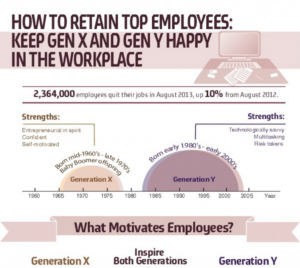
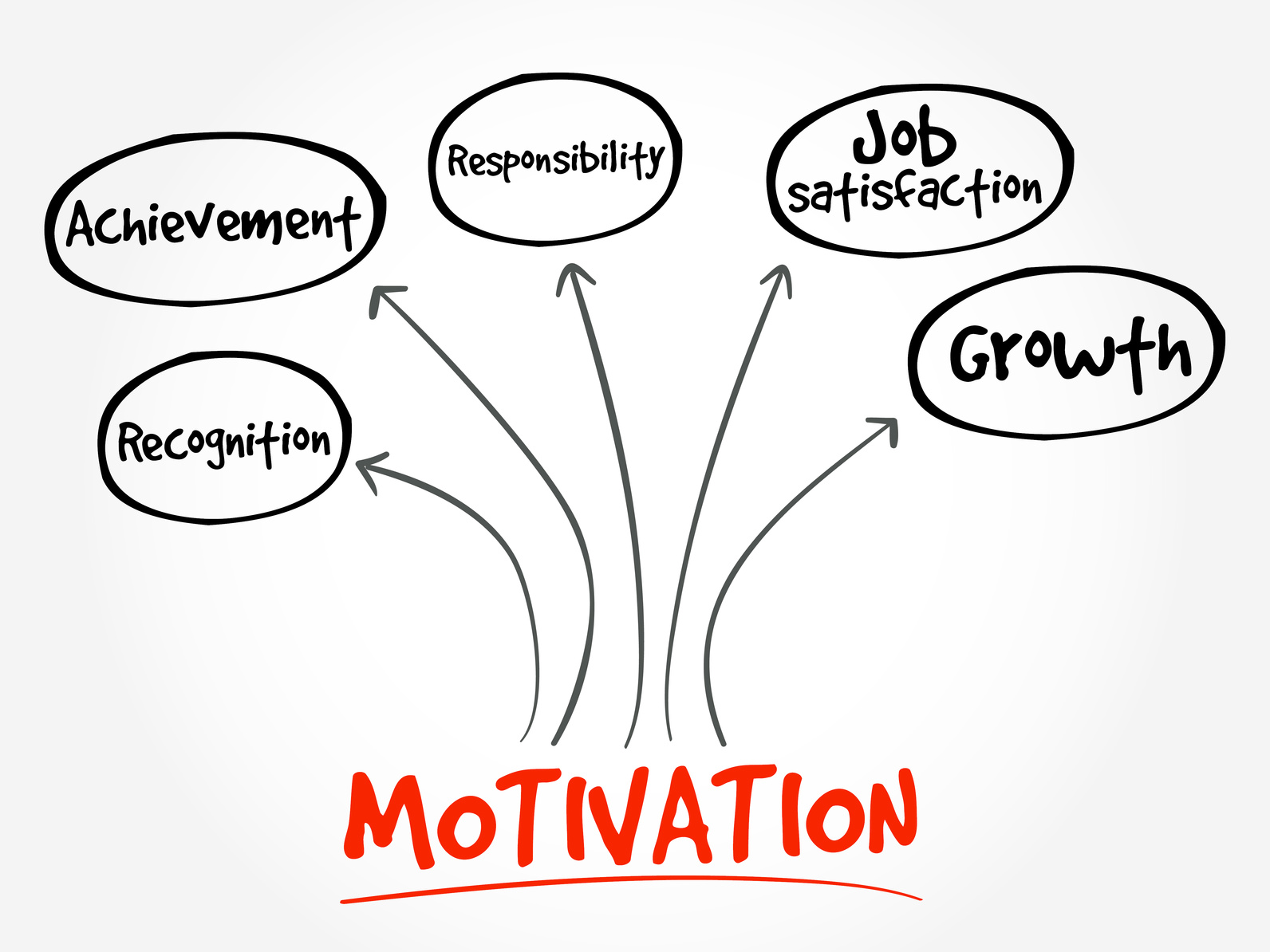
How to motivate your star employees and stop them from walking away?
Motivate your star employees from being active job seekers. Ways to motivate your star employees from straying away, looking for jobs.The best way to retain your star employees.

Every organisation has one or more star performers, and they are the greatest asset to the company. They are the can-do, self-driven, goal-oriented, ladder climbers of the bunch. Finding best-qualified candidates is not at all an easy task. When you finally succeed in hiring the right people for your firm, your job has not done.
You need to nurture and engage your star employees to stop them from leaving. As a manager, you should inspire them to keep on doing what they are so obviously good at doing.
However, highest-performing employees are notorious for being difficult to retain; they need a more tailored management approach to maintain their drive.
There are numerous tactics to motivate high performing employees. Below are five top ways to create an engaging workspace that allows your star employees to thrive.

Five highly useful tactics to motivate your star employees
- Encourage internal movement.
When you have a star performer, it’s natural to want to keep him or her in your department. It is totally logical—why would you want to recruit someone else, just so that the neighbouring department could steal your super-talented employee?
Unfortunately, the reality is that rising stars just want to rise in their career. If you want to keep the top talented employee in your firm, you need to provide a lot of opportunities for them to rotate and experience new types of work.
It doesn’t mean that you hardly have an internal posting system and allow people to apply for internal jobs. As an employer, you should clearly mention to your team that if they have an eye on another job, you will be supportive. Most often, managers feel betrayed when an employee wants to leave for a different department, but they shouldn’t. A manager should be proud of the training and developing a person enough to prepare him for a new job post—not to mention rewarded for providing the organisation with a high-impact employee.
- Find out what they value.
You may value a fat paycheck, but other people may value a flexible work schedule. The pinpoint is, just because you value a certain aspect of work doesn’t mean that your best performers value the same thing. Instead of assuming, ask them!
Everyone’s needs are different. The only thing you should analyse is whether your employee is completing the designated tasks well or not. If he is completing it on time, then let your star employee do what they want when they want it. Don’t push back because you strongly believe in the 9-to-5 schedule. Let them find out what works the best for them and what they value.
- Allow funding for employee development.
Even the best-talented employee need some help to move forward. Your top talent is no exception. Ensure your employees have the opportunity to take training classes, attend conferences or even receive executive coaching. Yes, all these things cost money. But do you know what costs you even more? It’s turnover.
When your top-performing employees are leaving because they can’t grow and develop in your firm, you pay a fortune to replace them. Hiring and training are terribly expensive, which is more than an annual conference or even a coach.
- Provide positive and negative feedback.
Your star employees need to feel appreciated and looked out for. Tell them when they are doing a good job and when they need a bit of improvement. People are often shocked with that last part. Who in the world wants to hear they aren’t perfect? Well, I’ll tell you: star performers who have ambition.
Why? Because they want to know about what they need to do to hit to the next step. So, speak up and tell your people when they are awesome and when they can do something better. Don’t be a horrible, nit-picky micromanager. But, if there is a talent they need to achieve before they can advance to the next level, bring it up now.
- Be an excellent manager.
You should always be an excellent manager, even if you have mediocre employees. When you’re an average manager, mediocre employees will stick around, and top talent will leave you in the dust.
It means you need to provide them with clear guidance and goals. You should be fair in your management and handle problems instantly. If there is any whiny slacker on your team, fire him soon. Honestly, your top performers won’t tolerate working with toxic co-workers. So, it’s crucial to get rid of bad employees if you want to keep the best employees.
If you’re not a great employer, then work on improving. Commit to your own development. Great people must manage great people, so get yourself up to your own standards as quickly as possible.

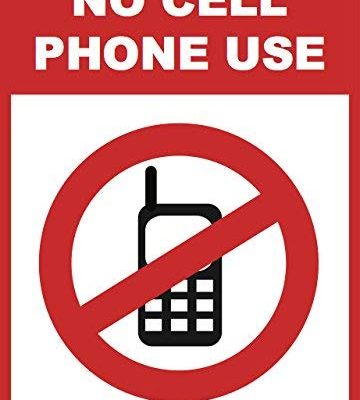
A few useful tips to create cell phone policy in the workplace?
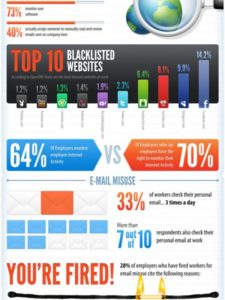
A few useful tips to create cell phone policy in the workplace. The menace of mobile phones has forced the management to create cell phone policy to curb the unproductivity in the workplace.
Usage of the smartphone has become ubiquitous in this past decade. But its excessive use at work can cause managers to pull their hair out in frustration. If employees are always on their mobile phones at work, it can have many adverse effects, including:
- Impacting productivity and performance of the employee.
- Irritating co-workers and annoy customers.
- Making acclaimed actors get out of the character and berate members of the audience mid-performance!
The best way to tackle this problem is to have a clear cell phone policy in place, which sets out all the rules regarding the permitted use of mobiles phones in the workspace. Below are the top things you need to consider.
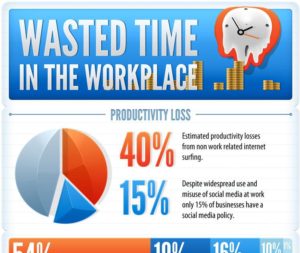
What are the best ways to create cell phone policy at work?
- Restrict when mobile phones can be used
You may wish to limit the use of cell phones to rest breaks or lunch or to deal with any emergency that cannot wait till the day ends.
You should also consider any health and safety issues. For example, if your employees are operating heavy or dangerous machinery, you should not let them use their cell phones as this could lead to severe injuries or accidents.
If your employees are in a retail or customer-facing role, you should tell them to switch off their phones to avoid client complaints. It can be annoying if you want to ask a question or waiting to pay, and you see a worker just staring at his cell phone and ignoring the surroundings.
- Keep the noise down
Having cell phones on loud or vibrate mode will alert the employee of a message or call. It can distract him. Therefore, you should emphasise to employees that cell phones should be kept on silent mode or they should switch them off during the working day. It will also help reduce the noise from the cell phone affecting other employees’ concentration.
- Decide where mobile phones should be kept.
You should have rules on whether your employees allowed to keep their mobile phone inside their pocket or on their desk, or whether they should leave them in a staff room, locker room, or space where they can store their belongings.
- Leave the room to make a call
If any of your employees need to make a personal call, you should encourage them to do it in a quiet area to avoid disturbing other employees.
- Turn off cell phones during the meetings
Inform all your employees that they are not allowed to use mobiles in meetings as it can disturb the flow of the meeting. If it is a team meeting, there is nothing worse than a person focusing on their cell phone and not paying attention to the most important topics of the day.
- Take care when driving
For any employee that drive as part of their work duty, you must ensure they realise not make or receive calls while driving. They should turn it off and make all calls go to voicemail. Alternatively, if there is any passenger, they can answer or make calls on their behalf. If they do need to use their cell phone, they should pull over and stop in a safe place, switch off the engine to make or receive the phone call.
Reiterate that they must obey this legal duty; or else, they may end up facing disciplinary proceedings. If they frequently breach this policy, it may result in dismissal.
You should also ensure that work practices do not pressurise staff to use their cell while driving. And any unsafe driving practices are challenged.

Learn more about cell phones at work and driving
- Do not allow misuse
If you do provide your employees with a mobile phone to perform their duties, ensure that it is the property of the company. It can be withdrawn or must be returned when their employment period ends. If you feel like any employee is misusing their cell phone by making too many personal calls, you can surely ask them to meet the costs of the non-business related calls.
- Tell your employees the rules
Ensure that you discuss the rules to employees. You can get your team to sign a form clearly stating that they have read and understood every policy of the company. Ensure the policy is easily accessible to them.
- Enforce the policy about cell phones at work
Having rules is great, but you should also ensure that you enforce them. If you continuously let employees sent quick text here and there, it will send out the wrong message. They will think that, despite the policy, they can use their phone as they wish.
- Be fair and consistent
Make sure you apply the policy fairly and consistently. It is to avoid employee concerns, a negative impact on team morale and discrimination claims. Do not let off your best work friend for being glued to their mobile phone, but discipline the worker you don’t have much in common with. An Employment Tribunal would likely find this unfair and potentially discriminatory.
In the age of the cell phone, we understand how vital it is to have our own mobile device. But, it is very easy to become addicted and lose productivity. We hope these tips will aid you in building your own mobile device policy.


How to manage fatigue – The most valuable Tips from industry experts
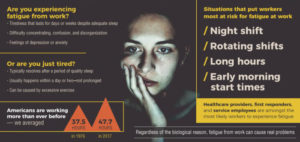
Manage fatigue most efficiently in the workplace. Fatigue is common for all who work towards perfection in the career. Manage fatigue to gain an advantage over your productivity loss.
“Fatigue makes fools of us. It robs us of our skills, our judgement, and blinds us to creative solutions.”
– Harvey Mackay
Every person is different, and fatigue affects them differently. So the best way to handle fatigue will vary from person to person. Knowing how the fatigue impacts your work life can help you to comprehend how best to manage the fatigue. However, it is a process that will take a lot of time and a lot of patience. Here are a few things that can be useful to think about when understanding your fatigue; they are:
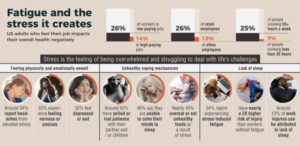
How to manage fatigue?
- Are there any patterns to your fatigue, e.g. the fatigue appears to get worse after doing a specific activity.
- Is there any particular time that your fatigue is worse than others? E.g. 3 pm.
- Does any taking rest at any period relieve symptoms of fatigue? E.g. An hour rests mid-morning.
- What are your limits when carrying out any office activity?
Once you get more aware of your fatigue, what can trigger episodes and what helps, you can think about how best you can add plans and activities into your daily life
“Hard work never brings FATIGUE, it brings satisfaction.”
– Narendra Modi
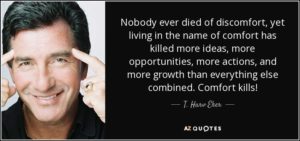
How to manage fatigue wisely?
- Keep a diary
Keeping a fatigue diary will be an effective way to understand your fatigue.
To make the most of your diary
- Document all the activities you do daily at the office
- Rate the fatigue levels for each activity you do, e.g. one = minimal levels of fatigue and 10 = very high levels of fatigue
- Add in any extra information regarding your day. More information is better to help identify any patterns to your fatigue levels.
- Making plans and prioritising them.
It can be frustrating when your exhaustion makes it difficult for you to do those things you want to do. So, it will be helpful if you concentrate on the most critical thing you should do daily and do them according to the priority. Your fatigue diary will help you when you are scheduling plans for your week.
- When you have important things to do, it is better to think about when you are most likely to feel at your best. Plan your activities around this time.
- Ensure you also schedule in rest periods around these activities. If you know a specific task is going to leave you feeling more fatigued, then you can schedule longer rest periods around the task.
- Be realistic about what all things you can do. If you plan too much and are unable to complete the activities, it will leave you feeling more frustrated and disappointed.
- If it is possible to break your task into more manageable chunks, then do it.
- Keeping active and sleep well
It can be challenging to consider exercising when you feel fatigued, but it is crucial to maintain your activity levels and exercise is very helpful for fatigue. However, consulting your healthcare professional before doing this will be the best.
- Plan your exercise into your schedule for the day.
- Set easy and attainable goals for you. Think about your own capabilities and what you can manage. The exercise doesn’t need to be so intense or complicated. It can be as straightforward as walking till the end of your driveway and back each day.
- Try to increase the physical activity you do a little bit at a time.
- Make sure to plan enough rest periods and do just enough exercise so that you are not overdoing it and leave feeling very fatigued.
Trying to keep a healthy sleep routine and avoiding sleeping for long periods throughout the day is very important.
“Our fatigue is often caused not by work, but by worry, frustration and resentment.
– Dale Carnegie
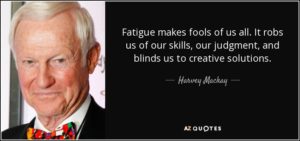

Why should you stop doing these things on LinkedIn in 2020
Linkedin in 2020 is the most innovative social media. The social media platform LinkedIn has announced exciting new features for a better reach for startups entrepreneurs and job seekers.

Most human beings tend to misuse the things around us. It may because we are unaware of how to use them. That’s probably true for how some of us tend to use LinkedIn in 2020.
If you use social media, you have probably seen several cases where people misuse it. While it can be shocking to see how people use personal social media platforms like Facebook and Twitter to overshare about their lives or post-inflammatory opinions, people often forget that LinkedIn is primarily a professional/business network.
LinkedIn, in their words, aims to be the world’s largest professional network. Most people leverage the platform to further their careers or professionally represent their organizations. But even though the network breathes to help people build relationships to advance their careers, or to represent their company in a public forum, so many people use the platform in ways that are offensive, spammy or risky for their career. Scroll down and get to know the five things you should immediately stop doing on LinkedIn.
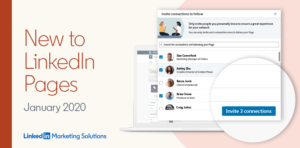
Five crucial things you should stop doing on LinkedIn in 2020 immediately:
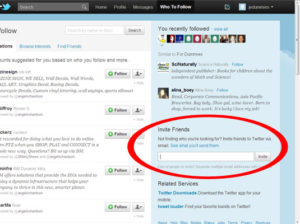
- Posting Inflammatory Comments
You should be very careful about every comment you post on LinkedIn as it is a worse place to be a troll or where you might face bigger consequences for your career. If your opinion disagrees with something someone has written in a post or comment and it’s not attacking you, your company or a cause you really care about, it’s better to respond respectfully or not at all. But there is a small portion of commenters who just want to let some anger or resentment out. It is equally confusing when people bring their own agenda to a discussion that was really about something else.
Never forget that what we post on LinkedIn can be permanent. Even though you forget about the incident, your comments will stick on users mind. Anything you do on LinkedIn can become a part of your professional record, and may also reflect on your employer, as your company name has tied to everything you post.
- Connect & Sell
Everybody who’s been on this platform has probably gotten a cold sales pitch via LinkedIn messenger. They might be from a person whom you’ve either recently connected with, or a person requested to connect with you, sends an automated marketing pitch about their business.
One of the common tactics these days is the bait land switch, where people makes notes in the invitation about viewing your profile and wanting to get connected, then makes a sales pitch through a messenger the moment the invitation is accepted. You may think you are creative, but this tactic is so overused that most people automatically tune out or ignore these requests.
It is a quick way to lose credibility with potential candidates and is the professional equivalent of asking a person his phone number at a bar before starting a conversation.
Instead, focus first on establishing a good relationship or authentic rapport to the potential leads. Trying to sell your business to people who don’t even know you may work in some instances, but more often, it rubs people the wrong way and can make them distrusting your entire organisation. You can also see right through the AI bots that are commonly used today to try to engage the other person as they don’t feel genuine or personal.
- Never tag unrelated people in your posts for getting exposure
Writing a few articles about influential personalities or posting a query for a person you know in a post or comment is a smart way for building awareness and dialogue. But some people on LinkedIn try to gain visibility for their posts by tagging unrelated people who have big followings, often tagging 10-20 people at a time. It is similar to putting tons of hashtags at the end of your post and looks spammy.
Tagging people in your post is not necessarily a bad idea, but ensure those people are clearly associated with your content. If you are tagging lots of unnecessary people who have nothing to do with what you are sharing, it might devalue your content and affect your credibility with other readers. You might also annoy that person who can untag themselves and may even remove you as a connection.
- Talking Politics
There are a time and place for political discussions—but unless politics is your career, it isn’t a good idea for LinkedIn. And it isn’t just the case for inflammatory political opinions either—it’s impossible to know what political comments may be distasteful to people or rub them the wrong way.
Sometimes, your organisation may be listed on your LinkedIn profile. Then, you need to remember that you represent that organization on the site. LinkedIn is not a smart forum for political discussion, especially when you are representing your employer. You might never know if something you posted could cost you your job, with or without you knowing.
- Flirting
It sounds silly, but it occurs more often than you would think. LinkedIn is the platform many people have been met. Sometimes, those relations may cross the professional boundaries, and people post really poor judgment with unprofessional image choices. The world has plenty of dating sites, where both parties have a clear intent for being there. Flirting with people unsolicited on LinkedIn is a great way to land yourself in hot water; the risks far outweigh the rewards. Just don’t do it.
LinkedIn is an excellent platform for business, but it’s far more effective when you use it correctly and don’t try to force things unnaturally. Remember, anything you do on LinkedIn in 2020 is fair game and easily seen by supervisors, peers, subordinates and future employers, especially when you post with your company title.
Stopping these five things as soon as possible will make you a better networker and help you build more positive professional relationships.


Are Head hunters or recruitment agencies the best for Executive Level Jobs?

Executive-level jobs are notoriously difficult to fill. You may be able to find a wealth of job seekers in the industry. But finding that ideal candidate who can help your business to grow, excel and thrive can be a tall order. It is the reason why most of the companies typically turn to head-hunters or recruitment agencies for filling their executive-level jobs. But which one is the best? And why?
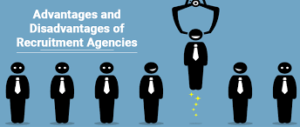
Head hunters or recruitment agencies are the best?
The Nature of the Beast
Executive-level jobs are a little less ‘run of the mill’ and clearly defined when it comes to recruitment. For example, if you have an administrative role vacancy, you’ll usually be able to draw up an exact job specification that will entail a tick list for a candidate search. It may include easily quantifiable skills like knowledge of a computer system or any other skills. Candidates for these job positions are generally much easier to come by, and the role can get filled by any one of several suitable applicants.
Executive-level jobs are much harder to quantify. You are likely to want someone with a specific skill set. However, it’s what you need above and beyond this, which makes recruitment so complicated. Most of these additional characteristics are less quantifiable.
For example, you may crave to know how your candidate has directly contributed to cost-savings in previous roles. Or, you may want to see that they are a skilled negotiator. These performances and proven abilities are rarely listed neatly in the resume of a candidate sitting ready and waiting for your vacancy from the moment it appears.
Hence, businesses usually turn to recruiters and head-hunters for executive-level jobs. But they aren’t the same thing.
Candidate vs. Employer Focus
Recruitment agencies are the conduit between the candidate and the employer in many ways. It is why we can use them for vast types and levels of jobs. Both the job seekers and the employer can and approach a recruitment agency with near equal status as they all need each other. However, it does result in a ‘one-size-fits-all’ approach to recruitment. It is fine in many scenarios.
Contrarily, a head-hunter is dedicated to executive-level jobs and is committed to the employer primarily. It means that instead of a generic recruitment approach, you can expect one that is highly tailored to your individual business needs. A good head-hunter is so keen on the role and the firm itself. You often find that through their various process of understanding the employer and the job role. They uncover very particular competencies that the employer may not aware of.
Passive vs. active candidates
One major weapon a successful recruitment agency has in its arsenal is a well-populated database. This database acts as a tool to match between a large number of candidates currently looking out for a new job and a large number of employers looking to fill their open positions. These candidates are what we call ‘active candidates’ as they are actively looking for new employment opportunities.
A head-hunter will not rely on targeting the active marketplace alone. Instead, they recognise that for executive-level jobs, the best candidates are rarely sat by the phone with an updated CV. Instead, these people are part of a pool of ‘passive’ candidates who aren’t currently searching for new employment. However, they will be in job roles where they are already displaying the skills and attribute you are seeking.
Research vs. Numbers
There are some further differences between recruitment agencies and head-hunters, which will help you, decide which is best for filling your executive-level vacancies.
Recruitment agencies use a system of profiling. It is what makes it possible to break an application down into a set of numbers that works in a database. It allows one candidate to quickly and easily get compared with another, which is then get compared with the job role.
Professional head-hunters put the onus on research and networking instead. They don’t believe in the numbers game, but an evidence-based one. By getting to know in-depth details about the position to be filled, and the company intimately, they can take a highly targeted approach that will vary from one role to another in the quest of finding that one candidate who can deliver what you need.
Head-hunters vs. Recruitment Agencies
Therefore, whether a head-hunter or a recruitment agency will best serve, you will depend on the type of job position you are looking to fill. For higher level or complex executive-level jobs, then an executive head-hunter is your best solution.
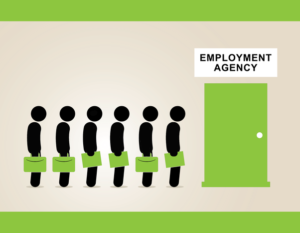
Want to see how we are eagle-eyed for your talent? Then, call us on +91 7795547089 or Email us at team@bssrecruit.com.
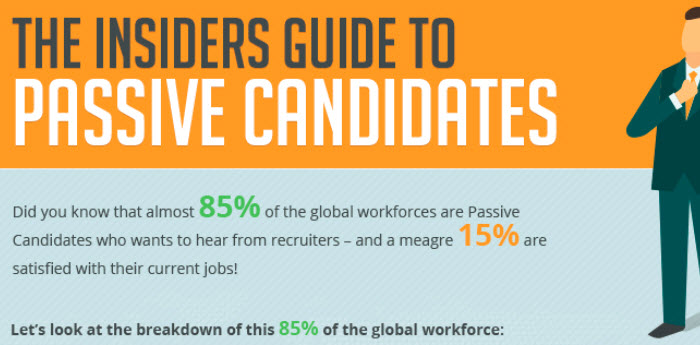
What are the best ways to attract passive candidates?
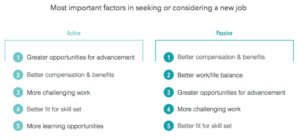
What are the best ways to attract passive candidates? Hiring a passive candidate for a recruiter is more complicated than an active candidate in the Job search.
Every recruiter knows the best candidates are often already employed. But, it doesn’t mean they are not worth pursuing. Passive candidates or people who are currently working and not actively seeking a new job are an essential element of any comprehensive hiring strategy.
Most often, passive candidates are difficult to recruit than active candidates. So to assist you with your recruiting efforts, we have put together a list of modern tips to recruit passive candidates in 2020.
You may ask why we should spend our energy sourcing people who might not want to switch jobs. Believe it or not, hiring passive candidates isn’t as difficult as it seems. In fact, 85 per cent of employed professionals around the world are open to new opportunities. Plus, if you neglect passive candidates, you’ll miss out on some great candidates. Passive candidates are more likely to make a strong impact on your firm and recruiting them worth the extra effort. Here’s what we recommend for you to consider:

Know the best ways to attract passive candidates
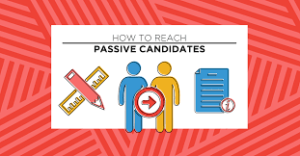
- Invest in AI.
It’s no secret that artificial intelligence (AI) brought a lot of changes in the recruitment industry. Using advanced automation tools to source applicants not only saves your time, but it can also aid you to discover higher-quality candidates.
AI-enabled tools can scour the web and analyse vast quantities of candidate data, and then foretell which passive candidates are ready to accept new opportunities. It would be near-impossible for a recruiter to make this kind of predictive analysis manually. If you haven’t welcome artificial intelligence yet, it’s time to get on board.
- Engage passive candidates on social media.
Social media is the best friend of modern recruiter. Studies show that recruiters who use social media to recruit can see a 50 per cent increase in candidate quality. But using social media is not enough to spot passive candidates. You must also know how to engage with them efficiently.
Here’s what we recommend by platform:
LinkedIn: There are a few hiring managers claim that passive candidate recruitment on LinkedIn has been less effective. Let me tell you that it is because recruiters on LinkedIn are all competing for the same pool of applicants.
But just because there are numerous recruiters on LinkedIn, doesn’t mean you should stop using the platform. Conduct your candidate research as usual. But instead of reaching out within the platform, work with a contact data provider to source contact information of the candidates. Then reach them out using a direct dial phone number or email address. It will cut through the LinkedIn noise and will increase your likelihood of attracting a candidate’s attention.
Facebook: Although Facebook does not typically see as a recruiting platform, it offers some unique search features that let recruiters perform highly targeted candidate searches. Once you’ve identified a high-quality candidate, shoot them a message! It isn’t a tactic that will always work, so use it sparingly. Explain that you don’t usually contact candidates through Facebook, but that you have an excellent opportunity for them. Then the number of positive responses you will get might surprise you.
Twitter: Similar to Facebook, Twitter proffers unique search functionality that employers can use to pinpoint everything from industry-related hashtags to user complaints about their jobs. Just as you would do on Facebook, conduct your outreach within the platform or secure their direct contact information using the help of a B2B contact database.
- Tailor your employer brand to attract passive candidates.
The modern job seekers have access to a wealth of information about your company, and they will use it.
- Studies show that most of the passive candidates perform extensive research on their own before they consider switching jobs.
- Sixty-six per cent of people who changed jobs were aware of the company they joined before applying.
- Ninety-two per cent of candidates would consider jobs changes if a firm with an outstanding reputation offered them a job position.
If you are not aware of what steps to take to improve your brand as an employer, here’s what we recommend:
Emphasize growth: Most professionals give preference to career growth and developmental opportunities in a job. It means that people don’t change their jobs for short-term benefits. They do it when they believe it’s the proper next step in their career ahead. Collaborate with your marketing department and create specific content that pleases passive candidates, prioritising the growth opportunities at your firm.
Showcase company culture: Passive candidates won’t get ready to leave their current role unless they feel confident that they will love working somewhere else. Share photos and videos of your current employees interacting at the organisation, having fun at work events, etc. Present a full scoop of what makes your company an enjoyable place to work.
Encourage employee advocacy: Incentivise your people to share branded content on their personal social media profiles. In today’s socially-driven environment, candidates trust their peers much more than they trust brands. Research shows that most job seekers say they are more likely to apply for a job opportunity if they come across it on the profile of someone they know rather than through the feed of a firm or even a recruiter. When your employees share your content online, it shows passive candidates that your team members are engaged and passionate about their job roles.
Update review sites: Review sites like Glassdoor is an indispensable marketing tool for potential employers. If a passive candidate checks your Glassdoor profile and sees poor reviews, they won’t be interested in working for you. So, ensure your profiles get updated with helpful information, a gallery of pictures, and any open positions.
Similar to other professions, it’s easy for your strategy to grow stale when you do something long and more than enough. But, unfortunately, as the recruiting climate changed and technology continues to advance, the same old tactics are working no longer. New tools and hiring strategies aren’t something to be wary of. Instead, we say, embrace these new strategies and techniques as more efficient and effective ways to find the best candidates.

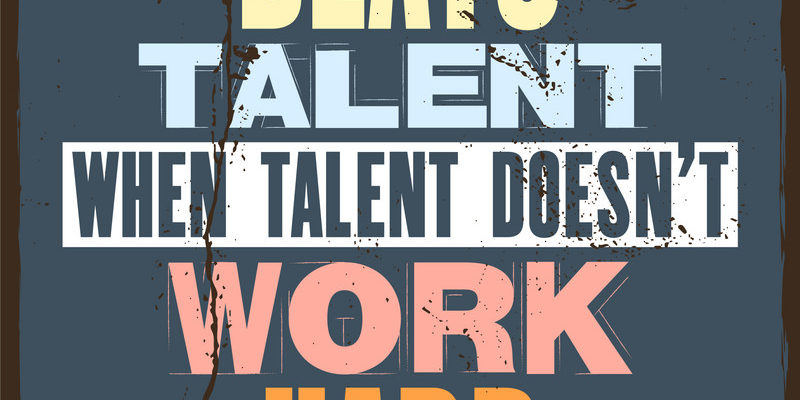
How to quickly achieve the goals of your organisation with a focus on efficient staffing and talent management?
Achieve the goals of your organisation with firmness in your vision and belief with hard work as a backup tool.
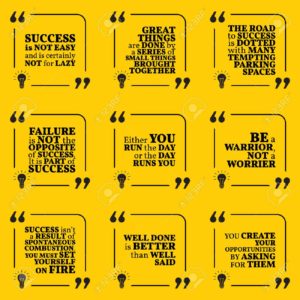
“An organisation’s ability to learn, and translate that learning into action rapidly, is the ultimate competitive advantage.” – Jack Welch
Do you know what the ultimate goals of your company and how you are progressing towards them are? If you are scratching your forehead, you are not alone. To successfully reach the short and long-term goals of your company, you need a strategic staffing plan that parallels your operating plan.
Clear goals, such as “become the market leader,” provide direction and companies need them to grow. Not to mention, they build trust in leadership, help define strategic priorities, and keep employees engaged.
You start this process by identifying the unique core strengths of each team member and then formulating a staffing approach to develop their abilities as well as address if there are any critical talent gaps.

Have a look at six ways to achieve the goals, with a focus on efficient staffing and talent management:
“Success cannot be attained alone. Any person’s time and power are limited. A wise leader enlists others in working toward organizational goals. – Gichin Funakoshi
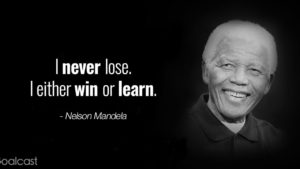
Six ways to achieve the goals
- Don’t just be an employer or boss; be a coach.
Create an atmosphere of coaching and mentoring. Make sure that managers at all levels know how to coach the employees properly. Those succeeded most in their career are approachable and are active listeners. They are growth facilitators who guide their employees as needed.
- Align staffing with strategic goals planning.
Your management and talent acquisition plan should align with the vision of your company, as well as the SMART goals outlined in your operational roadmap. As a talent manager or an HR, you should have a seat at the C-suite table as these strategies are developed.
Remember: SMART denotes “specific, measurable, achievable, realistic” and “timely.”
- Make recognition, motivation, and retention of high priorities.
If you prioritize employee recognition, the result will be a positive, productive, innovative organisational climate. Thank employees publicly and privately. The more you encourage and appreciate your employee and motivate them to do better, the more you will do a successful business.
“You have got to get your team to not only understand your company brand but also to understand their personal brand.” – Amber Hurdle
- Optimise organization and productivity.
If you continually review, reinvent and reinvest in the resources, including human capital, it will keep your firm visible and competitive. List your long-term and short-term goals and time frames for meeting them. Invite input from involved personnel.
Streamline or outsource tasks to save money and time and replace processes and technology that are outdated.
- Develop a strong performance appraisal system.
Conducting regular performance appraisals is a critical aspect for managing your human capital effectively. It is one of the few times during the year that you can get to have a lengthy discussion with your team about all aspects of their jobs. It includes setting goals, as well as giving and receiving critical feedback. The outcome of a thriving performance review is a greater satisfaction for both employee and employer and ultimately, higher productivity.
- Promote team building.
Employees that work as a team or unit are more productive than their isolated counterparts. Foster goodwill and collaboration among your employees and the ROI will soon be evident.
Team building lets employees experience a sense of achievement by working as a cohesive group to accomplish a challenging goal or complete a business-critical project. Barriers between individuals are broken here, and relationships are cultivated. When they go back to their day to day work, they are ready and willing to help one another to complete both individual and organisational goals.
Talent management today involves much more than just hiring and personnel administration. By partnering with the industry experts at Bangalore Secretary, you can develop the strategic approach needed to exceed your staffing goals as they relate to your overall business success.
“Teamwork is the ability to work together towards a common vision, the ability to direct individual accomplishments toward organizational objectives. It is the fuel that allows common people to attain uncommon results.” – Andrew Carnegie

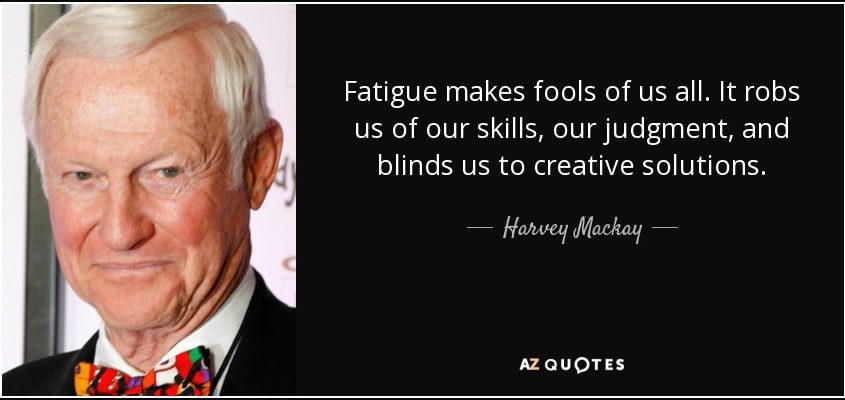
How to deal with the consequences of workplace fatigue and how to combat it?
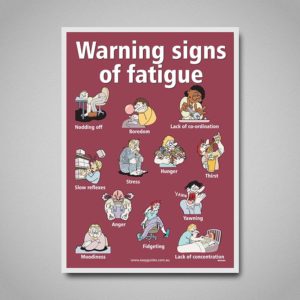
Workplace fatigue can affect internally as well as externally the growth of the concern. Workplace fatigue is not an employee Issue alone. He lets his workplace fatigue spread to others with tiredness and laziness that had plagued all over him.
What do some of the industrial mishaps have in common? The causes of these accidents often connected to sleep deficit and worker fatigue.
A fatigued worker can adversely impact not just his own health, safety and efficiency, but the safety and efficacy of operation of the organisation as well. Tired individuals are less productive and less focused. They have more medical issues, are absent more often, and are more likely to get involved in a job-related safety incident.
When you think that we can survive longer without food than without sleep, then the seriousness of the problem becomes apparent. If you feel pride in yourself on being able to function on minimal sleep, or your workspace has a culture of burning the candle at both ends, the points given below deserve some consideration.
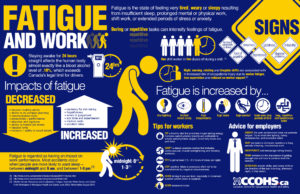
What are the consequences of minimal sleep?
- Minimal sleep causes accidents
Sleep loss and fatigue have been the factors in a few biggest disasters in recent history, including the nuclear accident happened in 1979 and the nuclear meltdown at Chernobyl happened in 1986. Studies show that poor-quality sleep or insomnia also leads to workplace accidents and injuries. In a study, workers who complained about excessive daytime drowsiness had significantly more work accidents.
- Sleep deprivation muddies the Mind
Sleep plays a critical part in thinking and learning. Sleeplessness affects these cognitive processes in many ways.
First, it impairs attention, alertness, concentration, and problem-solving. Battling with the continuous fog fuelled by sleep loss makes it difficult to learn efficiently.
Second, during night time, various sleep cycles serve to implant memories in mind. If you don’t get sufficient sleep, you won’t be able to remember what you learned and experienced during the day. A problem can affect even the most competent employee’s productivity.
- Sleep loss can lead to serious health issues
Sleep dysfunctions and chronic sleep deprivation can put you at risk for severe health issues such as heart attack and high blood pressure. Our bodies need rest to recover and regenerate.
- Lack of sleep makes you forget things
Sometimes you may find yourself bungling for the right words in an important meeting or staring blankly at a client or customer trying desperately to remember their name. It also happens because of not getting enough sleep.
- Sleeping fewer increases your risk of death!
The final and most dramatic point is that sleep deprivation could increase an individual’s risk of death. Sleep deprivation affects the mortality and those who had cut their sleep from seven to five hours or less a night nearly double their risk of death.
How to combat fatigue in the workplace
If your workspace resembles a scene from the walking dead, fret not. You can see the sunlight again at the end of the tunnel. The good news is that managing workplace fatigue can be relatively easy. You can initiate inexpensive wellness to help alleviate this problem among your employees. Consider the following points when looking to combat employees fatigue.
- Educate your employees
By offering employee educational materials, you can address the general problems of fatigue. Through this, they will get to know why getting sufficient sleep is so crucial and the tips for getting better sleep. You can also investigate sleep-tracker websites, apps or tools that will let your employees record the amount their nightly sleep and corresponding mood. Employees may get surprised at the actual amount of quality sleep they are getting each night.
- Cultivate healthy habits
Cultivating positive habits can contribute to a better night’s sleep. Encourage employees to eat nutritiously, exercise daily, and limit their consumption of tobacco, caffeine, and alcohol. Late-night consumption of caffeine and being glued to electronic devices just before bedtime can influence both the quality and quantity of sleep.
- Change the environment
General workplace changes can also effectively cause fatigue and its accompanying risks. So, install proper lighting everywhere, designate quiet break areas and offer healthy food options in break rooms. Consider adjusting policies to provide more frequent and restful breaks. Use machinery and equipment that eliminates or diminishes any excessive physical demands of your employees. It can include ergonomic furniture and anti-fatigue matting.
- Ask the Individual
Ask employees what time of the day they get most tired, and think of measures to approach those times, e.g. offering a short extra break, providing a healthy snack option or allowing them to listen to music. It is especially important for employees who work in safety-sensitive jobs, where fatigue is a major hazard.
- Re-examine Job Descriptions
Take a glimpse at your individual job descriptions and workloads as well to see if there may be a reason why a particular person or department may be struggling with fatigue. You may notice that a job description is unbalanced or has had responsibilities added to it over the years. Then, consider redesigning the job to include a variety of mental and physical tasks instead of all physical or all mental.
Taking even small actions is an essential first step in addressing fatigue in your workplace.
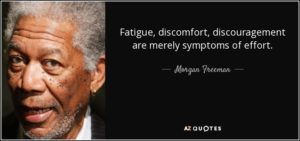
End of content
No more pages to load





